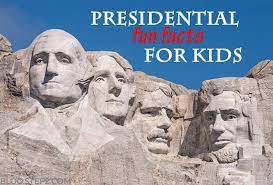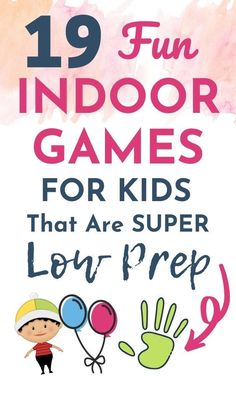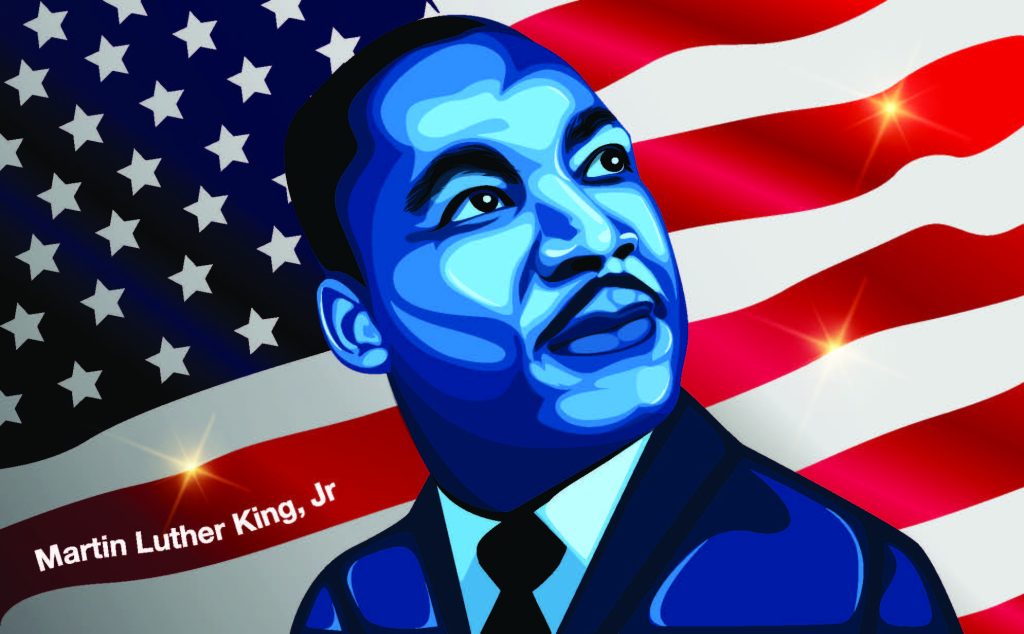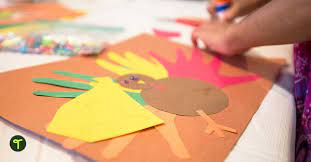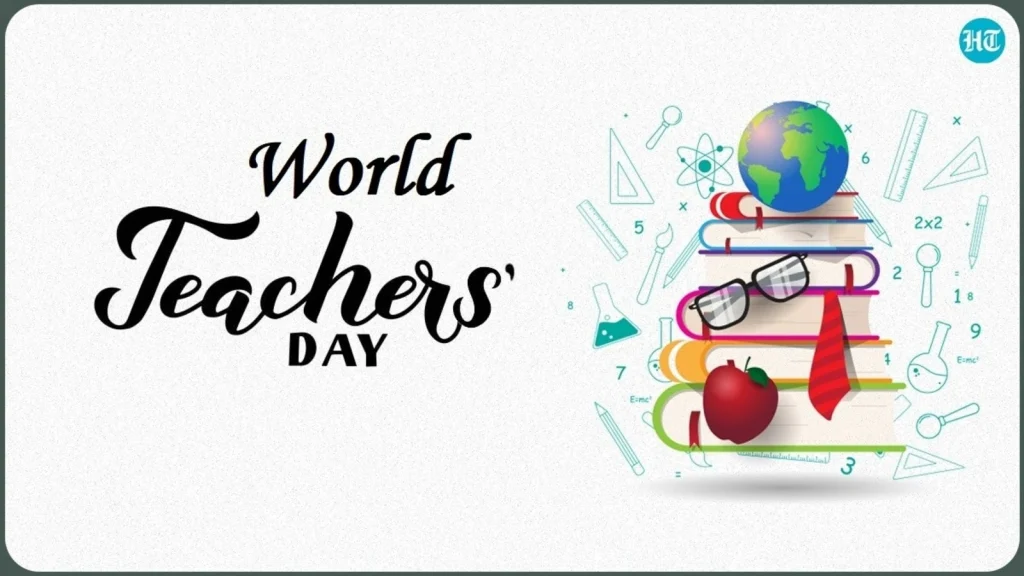Did you know that the President of the United States has a lot of interesting history? Let’s dive into some fun facts about U.S. Presidents that kids will find fascinating!
George Washington, our first president, did not have a middle name. Unlike many of us today with a first, middle, and last name, George Washington just had two names!
Thomas Jefferson was not only a president but also an architect. He designed his famous home, Monticello, as well as the campus of the University of Virginia.
The teddy bear is named after President Theodore “Teddy” Roosevelt. After he refused to shoot a bear cub on a hunting trip, a toy maker named a stuffed bear “Teddy’s bear,” and it became a huge hit.
Abraham Lincoln was an extraordinary wrestler before becoming president. As a young man, he was only defeated once in about 300 matches and is enshrined in the Wrestling Hall of Fame.
John F. Kennedy was the first president who was also a Boy Scout. Scouting teaches valuable skills and Kennedy was part of the program in his youth.
Barack Obama made history not once, but twice! He became the first African American President of the United States in 2009 and won the Nobel Peace Prize that same year.
Did you know that President James Garfield could write with both hands at the same time — in different languages? He could write Latin with one hand and Greek with the other!
Franklin D. Roosevelt served four terms as president, more than any other president. After him, an amendment to the Constitution limited presidents to two terms.
Grover Cleveland is the only president to serve two non-consecutive terms, making him both our 22nd and 24th president.
Donald Trump is known for being one of the oldest presidents elected and also for his background as a reality TV star before taking office.
Sharing these quirky pieces of presidential trivia can make history lessons more enjoyable for kids and adults alike!
November History + Awareness Months to Add to Your Classroom Calendar
November is a month rich with historical significances and awareness themes that are important to highlight in classroom settings. This article aims to inform educators about relevant topics and observances that they can integrate into their curriculum to enrich the educational experience of their students.
The eleventh month of the year is recognized in several countries for its historical and cultural importance. In the United States, perhaps the most prominent observance is Veterans Day, which falls on November 11th. Originally called Armistice Day to commemorate the end of World War I, it has evolved into a day dedicated to honoring all veterans who have served in the U.S. armed forces.
November also marks National Native American Heritage Month, an opportune time to explore the rich and diverse cultures, traditions, histories, and important contributions of Native people. It is an invitation for educational exploration into topics that are often overlooked or marginalized within typical history curriculums.
Awareness months serve as reminders of certain causes and issues that need more attention. Movember is one such initiative that takes place during November. Movember focuses on men’s health issues, including prostate cancer, testicular cancer, and men’s mental health and suicide prevention. The movement encourages men to grow mustaches during November to raise awareness and funds for these critical topics.
Another significant campaign during this month is Alzheimer’s Awareness Month. As a disease that affects millions worldwide, educating students on the effects of Alzheimer’s and dementia can increase understanding and compassion for those who struggle with these conditions.
Lastly, World Diabetes Day on November 14th serves as a global advocacy event aiming to promote diabetes care, prevention, and cure around the world. It is a crucial day for educators to discuss health education, diet, exercise, and lifestyle choices with their students.
In summary, November offers a tapestry of historical significance and awareness themes crucial for educational discussions. From honoring those who have served in the military to highlighting the cultures of Native American peoples, from addressing men’s health issues through Movember to raising awareness about Alzheimer’s disease and diabetes—there are many opportunities for educators to enrich their classroom calendars with valuable lessons during this month.
Integrating these observances into lesson plans not only enhances student knowledge but also fosters empathy, understanding, and a deeper appreciation for diversity and health issues impacting society today.
Martin Luther King Jr Facts for Kids
Dr. Martin Luther King Jr. was an influential figure who played a pivotal role in the American civil rights movement. He is widely recognized for his non-violent protests against racial discrimination and his enduring speech ‘I Have a Dream’. Dr. King was born on January 15, 1929, in Atlanta, Georgia, and he showed a talent for public speaking from a young age.
King’s leadership during the Montgomery Bus Boycott gained him national attention and cemented his role as a primary leader of the civil rights movement. He advocated for civil disobedience and peaceful protest, influenced by Mahatma Gandhi’s success with non-violent activism in India.
On August 28, 1963, Martin Luther King Jr. delivered his inspirational “I Have a Dream” speech from the steps of the Lincoln Memorial in Washington D.C. This momentous event drew over 250,000 supporters of civil rights and became a defining moment in the struggle for racial equality.
Dr. King was awarded the Nobel Peace Prize in 1964 at the age of 35, making him the youngest man to have received the award at that time. His acceptance of the award brought further credibility to his cause and increased international attention to the civil rights issues in America.
Tragically, Dr. Martin Luther King Jr.’s life was cut short when he was assassinated on April 4, 1968, in Memphis, Tennessee. Even after his death, his message continues to resonate with millions around the world who strive for equality and justice.
Martin Luther King Jr. Day is celebrated on the third Monday of January each year around his birthday as a tribute to his memory and legacy; it is a day for reflection on issues of racial justice and community service.
King’s powerful oratory skills, along with his unwavering commitment to non-violence and equality, made him an enduring figure whose ideals live on long after him. His efforts contributed significantly to the passing of civil rights legislation such as the Civil Rights Act of 1964 and the Voting Rights Act of 1965.
Teaching children about Martin Luther King Jr. is vital for them to understand the importance of equality, racial harmony, and peaceful activism. His life story provides valuable lessons on empathy, courage, and determination to stand up against injustice.
12+ Martin Luther King Jr. Activities to Teach Kids About MLK in a Meaningful Way
Martin Luther King Jr. Day is not just a day off from school or work; it’s a day to honor the legacy of one of the most influential civil rights leaders in American history. Teaching children about Martin Luther King Jr. is essential for them to understand the importance of equality, the power of nonviolent activism, and the impact that a single voice can have on the world. Here are more than twelve activities that can help kids learn about MLK in a meaningful way.
1. Read Aloud from “I Have a Dream” Speech: Start with the basics by reading parts of MLK’s most famous speech. Discuss with kids what his dream was and what it means to them.
2. Create an MLK Timeline: A chronological timeline of key events in Martin Luther King Jr.’s life can help children understand the historical context of his work.
3. Watch Animated Videos: Use educational animated videos geared towards children to explain the life and times of MLK.
4. Write “I Have a Dream” Poems: Encourage kids to write poems or short essays about their dreams for a better world.
5. Illustrate Nonviolence: Engage in discussions about nonviolence and have kids draw posters illustrating peaceful protest.
6. Visit Local Historical Sites: If possible, visit local civil rights monuments or museums that can provide a tangible connection to MLK’s legacy.
7. Host a Diversity Book Club: Read books that celebrate diversity and discuss their relevance to MLK’s message.
8. Play Trivia Games: Create a trivia game with facts about MLK’s life, achievements, and quotes.
9. Role-Play Scenarios: Have children role-play different scenarios that teach problem-solving through peaceful means.
10. Organize a Community Service Project: Emphasize the importance of community service and organize a project that honors MLK’s values.
11. Sing Historical Songs: Learn and sing songs from the civil rights movement that convey messages of hope and unity.
12+. Participate in School Assemblies or Plays: Encourage participation in school events that commemorate MLK Day, possibly through plays or musical performances highlighting his life’s work.
By engaging in these activities, children not only learn about historical facts but also understand the principles of equality, empathy, and community service that were central to Martin Luther King Jr.’s message. These lessons are timeless and continue to be relevant today as we strive for social justice and mutual understanding across diverse communities.
November History Awareness Months To Add To Your Classroom Calendar
As educators, it is essential to foster awareness and understanding of historical events and the significance they hold. By incorporating awareness months into your classroom calendar, you can provide students with an opportunity to explore various topics and deepen their knowledge. Here are a few November awareness months to consider adding to your classroom calendar:
1.Native American Heritage Month:
November is officially recognized as Native American Heritage Month, dedicated to honoring and celebrating the rich and diverse cultures, traditions, and contributions of Native Americans. Use this month to educate your students about Native American history, customs, and contemporary issues faced by indigenous communities.
2.National Adoption Month:
National Adoption Month aims to raise awareness about the importance of adoption and recognizing the individuals and families involved in the adoption process. Use this month to teach your students about the different forms of adoption, the experiences of adoptees, and the legal and emotional aspects of adoption.
3.Veterans Day:
Observed on November 11th, Veterans Day is an opportunity to honor and express gratitude for the brave men and women who have served in the armed forces. Teach your students about the significance of this day, the sacrifices made by veterans, and the importance of showing appreciation for their service.
4.National American Indian Heritage Month:
In addition to Native American Heritage Month, November is also recognized as National American Indian Heritage Month. This is an opportunity to delve deeper into Native American history, culture, and contemporary issues, highlighting the diverse experiences and achievements of Native Americans throughout history.
5.World Kindness Day:
Celebrated on November 13th, World Kindness Day encourages individuals to engage in acts of kindness toward one another. Use this day to foster a compassionate and inclusive classroom environment, emphasizing the importance of empathy, respect, and helping others.
6.National Family Literacy Day:
Designated on November 1st, National Family Literacy Day promotes the importance of reading and learning together as a family. Encourage your students to share their favorite books, organize reading activities, and involve families in literacy-related projects.
By incorporating these awareness months into your classroom calendar, you can create a more inclusive and comprehensive learning environment for your students. Remember to integrate interactive and engaging activities that allow students to actively participate and deepen their understanding of these important topics.
Australian Gold Rush Unit Plan
The Australian Gold Rush played a significant role in shaping the country’s cultural and economic landscape. The discovery of gold in the 1850s propelled Australia onto the international stage, bringing a influx of migrants and economic prosperity. A unit plan centered around the Australian Gold Rush can yield a rich exploration of history, geography, economics, and social studies for students.
The key components of an Australian Gold Rush Unit Plan would include:
1. Lesson Objectives
– Understand the historical context and significance of the Australian Gold Rush.
– Analyze the impact of the gold rush on Australia’s development.
– Examine the experiences of different social groups during this period.
– Assess the environmental impact of gold mining activities.
2. Introduction to the Gold Rush
– A brief background about global gold rushes.
– Initial discoveries of gold in Australia and subsequent rushes.
3. The Impact on Indigenous Populations
– The effects on Aboriginal lands and societies.
– Conflicts and displacement due to mining.
4. Migrant Stories
– Waves of immigration and the cultural melting pot.
– Personal accounts of those who traveled to Australia to seek their fortune.
5. Life on the Goldfields
– Daily life, work, and leisure activities during the gold rush.
– The establishment of boomtowns and their eventual decline.
6. Economic Consequences
– How the gold rush changed Australia’s economy.
– The introduction of new trade routes and businesses.
7. Law and Order
– The development of regulatory frameworks in response to mining activities.
– Notable events such as Eureka Stockade rebellion.
8. Environmental Considerations
– The impact on landscapes from mining practices.
– Contemporary issues related to historical mining sites.
9. Legacy of the Gold Rush
– Ongoing influence on Australian identity.
– Connections between past and present in regions affected by the rush.
10.Activities & Assessments
– Research projects on individual stories or specific regions affected by the gold rush.
– Role-playing exercises recreating life on the goldfields or pivotal historic events.
– Field trips to local museums or historical sites related to the gold rush.
– Creative writing assignments imagining life during this era.
– Debates concerning issues such as wealth distribution, immigration policy, and indigenous rights during that time.
11.Resources
– Primary source documents from the period (newspaper articles, diaries, letters).
– Maps showing goldfield locations and migration patterns.
– Artwork depicting life during the Australian Gold Rush.
The unit should encourage critical thinking about how a single discovery can transform a nation economically, socially, culturally, and environmentally. It challenges students to consider multiple perspectives—from indigenous peoples to immigrants—and reflect upon long-term impacts not only on human society but also on natural landscapes.
October History + Awareness Months Every Elementary Teacher Should Be Aware Of
October isn’t just about Halloween and falling leaves; it’s also an important month for recognizing various historical events, cultural heritages, and health awareness campaigns. As educators, it’s essential to incorporate these themes into your curriculum to promote diversity, education, and empathy. Here are key observations that every elementary teacher should be aware of:
National Bullying Prevention Month
Bullying is a serious issue in schools nationwide. October serves as National Bullying Prevention Month, which aims to encourage schools, communities, and organizations to work together to stop bullying by increasing awareness of the prevalence and impact of all forms of bullying on children.
Dyslexia Awareness Month
Dyslexia affects approximately 20% of the population and represents 80-90% of all those with learning disabilities. It’s a critical issue for educators given that early detection and intervention can lead to significant improvements for students. Dyslexia Awareness Month highlights the importance of understanding this learning difficulty.
Global Diversity Awareness Month
A celebration of the world’s diverse cultures and heritages. Schools can take this time to teach students about different cultures through stories, music, art, and guest speakers, creating an inclusive environment for all students.
LGBT History Month
Founded in 1994 by a Missouri high-school history teacher, LGBT History Month provides role models, builds community, and represents a civil rights statement about the contributions of the LGBT community. It’s an opportunity to educate students about historical figures who have contributed greatly to societal advancement while being part of this community.
Italian-American Heritage and Culture Month
This month celebrates the contributions that Italian Americans have made to American culture. Featuring lessons on notable Italian-American figures or learning about how Italian art has influenced our world can provide students with richer cultural understandings.
Polish American Heritage Month
Originating in 1981, this month recognizes the contributions of Polish Americans to society. Activities might include exploring famous Polish Americans or understanding Poland’s history and its influence on American culture.
Besides these observances, there are several important days in October that could be incorporated into educational modules: World Teacher’s Day (October 5th), which honors the vital role teachers play in education and development; Indigenous Peoples’ Day (alternatively observed in lieu of Columbus Day); and United Nations Day (October 24th).
By incorporating these awareness months into your teaching plans, you enrich your students’ understanding of our society’s diverse tapestry. It’s a powerful way to teach empathy and celebrate differences in your classroom throughout October.
With bans in schools, Florida churches are teaching Black history instead
With bans in schools, Florida churches are taking an active role in teaching Black history to ensure that the community’s children have access to this essential part of their education. Amid discussions on critical race theory and the legislative measures restricting certain aspects of history lessons, religious organizations are stepping in as sanctuaries of knowledge.
In community halls and Sunday school rooms, church leaders and volunteers are organizing workshops and lectures dedicated to African American history. Lessons range from the history of slavery and civil rights movements to the accomplishments of notable Black figures in science, politics, art, and other fields. These programs aren’t just for children; they extend an invitation to all ages, encouraging intergenerational dialogue and understanding.
By providing a comprehensive Black history education, churches are filling a gap left by the school system’s limitations. This initiative emphasizes that understanding the past is crucial for shaping a more inclusive and equitable society.
Advocates for these church-led educational programs argue that knowing one’s heritage fosters a stronger sense of identity and community cohesion. They also see this movement as a form of peaceful resistance against what they perceive as censorship within the educational system.
Critics of the ban argue that withholding parts of history, especially those relating to race and inequality, deprives students of a well-rounded understanding of their country’s past. They fear that by not confronting uncomfortable truths, we may be doomed to repeat them. Conversely, supporters of the restrictions argue that they protect children from divisive concepts.
Florida churches spearheading Black history education have received support from various corners, including historians, educators, and civil rights organizations. Their initiative goes beyond mere protest against educational restrictions; it demonstrates a commitment to preserving cultural heritage and enlightening future generations.
This movement within church communities has sparked a vital conversation about who decides what is taught to our children. As this debate continues both within Florida and around the country, these churches serve as beacons for those who believe that understanding all facets of American history is key to progress and unity.
10 Women’s History Month Activities for Kids to Bring Her Story to Life in the Classroom
Celebrating Women’s History Month with children is an excellent opportunity to teach them about the significant contributions women have made throughout history. Here are ten engaging activities for kids that will help to bring her story to life in the classroom:
1. Create a Women’s History Month Bulletin Board: Encourage students to research and create posters about influential women. They can include facts, quotes, and illustrations. Display all the posters on a classroom bulletin board during the month.
2. Host a Biography Reading Hour: Select books that highlight the lives of various notable women from different backgrounds. Each day, read a chapter or story to your class and engage the kids in a discussion about her achievements.
3. Write Letters to Inspirational Women: Have students write letters expressing their admiration to living women who have made an impact on society. This exercise teaches children the art of letter writing as well as gratitude.
4. Stage a Wax Museum: Students can pick a historical woman, research her life, and then “become” that person for a day. They can dress up like her and explain her life’s achievements to visitors of the classroom wax museum.
5. Women’s History Month Daily Facts: Start each day with a new fact about an important woman in history. This could be done during morning announcements or at a specific time during class.
6. ‘Herstory’ Book Club: Form a book club that focuses on literature by or about women who have made history. Discuss themes, historical contexts, and the achievements detailed in the books.
7. Women in Science Experiments: Highlight female scientists by conducting experiments pioneered or invented by women. This could range from experiments based on Marie Curie’s work with radioactivity to Rosalind Franklin’s contributions to understanding DNA.
8. Create Timeline Murals: In groups, have students build timelines of women’s history across various disciplines such as politics, science, arts, etc. Use creative materials and allow them to present their timelines to their classmates.
9. Interview Local Sheroes: Facilitate interviews with local influential women either by bringing them into the classroom or via video chat. Prepare questions with your students beforehand which can relate to their struggles, accomplishments, and advice for young girls.
10. Women’s History Scavenger Hunt: Organize a scavenger hunt where students find information on different influential women around your school or designated area – possibly using QR codes that link to videos and facts about each woman included in the activity.
These activities can stimulate discussion and foster an environment of respect and admiration for female contributions throughout time while making learning about women’s history interactive and fun for kids!
How I Use Pop Culture to Teach History (And You Can, Too!)
As a history teacher, one of the greatest challenges I face is keeping students engaged in the subject matter. While some students inherently love history, others may see it as a dull recitation of names, dates, and events. That’s where pop culture comes in handy. By using pop culture to teach history, I’ve found that students are more engaged and excited about learning. In this article, I’ll share my experiences and offer tips on how you can do the same.
1. Incorporate primarily television and movies into lessons.
Our students live in a world dominated by visual media. As a result, incorporating television shows and movies into lessons can be an effective way to get their attention. For example, when discussing the civil rights movement of the 1960s, I might incorporate an episode of “The Twilight Zone” that deals with racial prejudice or show clips from the groundbreaking film “Guess Who’s Coming to Dinner.” These visual aids help contextualize historical events and make them more relatable to students.
2. Use music to explore historical eras.
Music is another powerful tool for teaching history through pop culture. By exploring popular songs from different time periods, students can gain insight into the prevailing attitudes and social issues of those eras. For instance, when studying the Vietnam War, I might have students analyze protest songs like “Fortunate Son” by Creedence Clearwater Revival or “Give Peace a Chance” by John Lennon. Not only does this approach make history more engaging, but it also fosters critical thinking skills as students grapple with interpreting lyrics within their historical context.
3. Engage with comic books and graphic novels.
Comic books and graphic novels offer another avenue for incorporating pop culture into history lessons. For example, Art Spiegelman’s “Maus” tells the story of the Holocaust through a unique visual medium, making a difficult subject more accessible and engaging for students. Similarly, teaching about the Civil Rights Movement could include using March, a graphic novel series by Congressman John Lewis that recounts his experiences during the fight for racial equality.
4. Use current pop culture to discuss historical events.
Nothing engages students more than relating history to their current interests. Help students draw parallels between historical events and contemporary social issues, politics, or pop culture. For example, when discussing the women’s suffrage movement, compare it to current conversations surrounding gender equality and representation, such as the #MeToo movement or the increased attention given to the work of female artists in film and television.
5. Encourage students to create their own historical pop culture content.
Finally, give students an opportunity to create their own pop culture content based on historical events. This could include writing a song about a specific era or creating a comic strip that represents an important event. By allowing students to put their stamp on history using popular mediums, they become more invested in the material, and gain a deeper appreciation for its relevance in their daily lives.
In conclusion, using pop culture to teach history is not only beneficial in capturing student interest but also encourages critical thinking and analysis of historical events. By incorporating various mediums such as television, movies, music, and comics into lessons, history becomes relatable and exciting for all students. Give this approach a try and experience the rewards of bringing history to life through pop culture!
